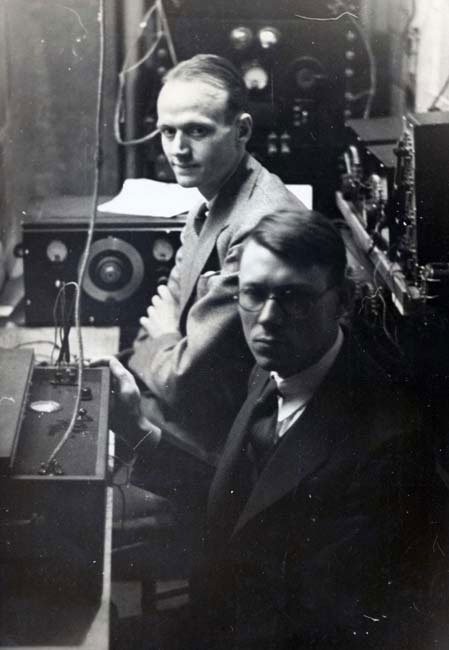Turn cats into phones, the truth is incredible but true in history
In 1929, two researchers at Princeton University, USA conducted experiments transforming cats into startling phones.
Professor Ernest Glen Wever and research assistant Charles William Bray embarked on a unique experiment in the spring of 1929.

Professor Ernest Glen Wever and research assistant Charles William Bray.
The two researchers' luggage is a cat and creative curiosity wants to transmit signal waves through an animal. Then, the two began to create the first and only cat phone in the world.
Ernest Glen Wever shared the purpose of the experiment to test how the auditory nerve perceives sound. Then they transformed a living cat into a human communication device.
The two researchers injected the cat with anesthetic and then approached its auditory nerve. They attach one end of the "telephone" to the cat's auditory nerve and the other end is a receiver system in a soundproofed room.
When Bray spoke into the cat's ear, Wever would hear from the other end in the closed room more than 15 meters away. The results showed that Wever completely heard what his colleague said with high-quality sound. And they were successful at the beginning when creating the cat phone .

The sound transmitted through the cat ears becomes louder, the sound intensity in the receiver becomes higher.
According to History, the duo tried to determine whether the response of the auditory nerve correlated with the intensity of the stimulation. The sound transmitted through the cat ears becomes louder, the sound intensity in the receiver becomes higher. This confirms that the frequency of the auditory nerve correlates with the frequency of sound.
However, the cat later died from the shockwave and research activity was stopped. Of course, the experiment took place long before the world animal protection association was born.
Research by Ernest Glen Wever and colleagues is recognized as a prerequisite for the development of modern cochlear implants later.
- 40 'incredible' stories but still have to believe because they are true!
- 10 incredible facts about the world show that our knowledge is too little
- The 'strange' cats in the world
- Amazing facts in world history
- Did cats come with the Vikings to conquer the world?
- Decipher mystery: Is it true that cats like to eat fish?
- Fall back with the most incredible facts in the world
- The truths make you suffer because you don't know anything about the animal world
- 9 truths 'cause sock' dedicated to cat lovers
- Revealing the incredible truth few people know about ancient Egypt
- Marvel at 8 incredible facts that seem like a myth
- Turn over three tricks in Chinese history: Qin Shi Huang, Zhou De have been unfairly?
 'Fine laughs' - Scary and painful torture in ancient times
'Fine laughs' - Scary and painful torture in ancient times The sequence of numbers 142857 of the Egyptian pyramids is known as the strangest number in the world - Why?
The sequence of numbers 142857 of the Egyptian pyramids is known as the strangest number in the world - Why? History of the iron
History of the iron What is alum?
What is alum?